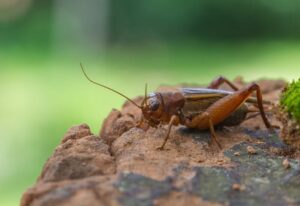What Attracts Crickets & How To Get Rid Of Them

We Get Rid Of Crickets In Baltimore, MD
The chirping and jumping of crickets can be problematic for many people. These pesky pests infest your home and multiply, making it hard to get rid of them. They not only chirp, but they also pose a threat to your property by damaging your clothing and carpets. All Star Pest Management gives Baltimore, MD homeowners advice about what attracts crickets and how to get rid of them. Contact us to learn more.
Cricket Identification
A house cricket is primarily light brown with three dark bands across its head. They have long antennae, large back legs, and a set of wings. You’ll often hear them chirping. The males produce two or three high-pitched, short sounds. A field cricket lives in the light and has a dark body. Camel crickets have a humpbacked appearance with long legs that allow them to jump high.
What Attracts Crickets?
Crickets love fabrics, including leather, wool, cotton, and silk. They also feed on fruit, pet food, and vegetables. Crickets live in moist, warm environments. They’ll often come indoors searching for shelter. Crickets often congregate near fireplaces and heaters for warmth. They are usually found near light, so it’s important to turn off your outdoor lights as soon as possible every day. The nocturnal crickets will start laying their eggs near the lights if they are left on. Crickets quickly cause damage to clothing and carpet in your home. They’ll stay in any area that is warm and moist, getting ready to lay eggs to expand their family.
Cricket Eggs
Male crickets use their chirping to attract their mates. The female cricket will then find a moist area to lay about 100 eggs. A new batch of crickets will be ready to take on the world in one to two weeks. Cricket nymphs take about three months to mature. You can find these new crickets hiding in the wet, warm areas of your home and around your property.
Eliminating Crickets
We offer multiple tips to eliminate crickets in your home, including:
- Seal Exterior Cracks – One of the best ways to get rid of crickets is to ensure your home is closed off from pesky intruders by sealing any gaps, cracks, and crevices.
- Cover Trash – Keep trash cans covered inside your home. Take out the trash once it is full to keep away pests and rodents.
- Lawn Maintenance – Crickets often find great hiding spots in tall grass and weeds. Mow your grass and pull weeds regularly to take away these hiding spots.
- Vacuum – If you vacuum regularly, you’ll eliminate cricket eggs in your carpets and rugs.
- Molasses – Place a jar of molasses and water in places crickets live. The sweet scent will lure them into the water.
- Nitrogen-Fixing Plants – Sweet peas, garlic, and clover are nitrogen-fixing plants that irritate crickets.
Pest Control Elimination Of Crickets
Our experienced team understands crickets can be a bother. In the last summer, the cricket population usually skyrockets. If you suspect a cricket problem, call our professional team to eradicate the issue. Our host of environmentally friendly and effective cricket control treatments ensure a cricket-free home quickly. Contact our bug extermination team today!
